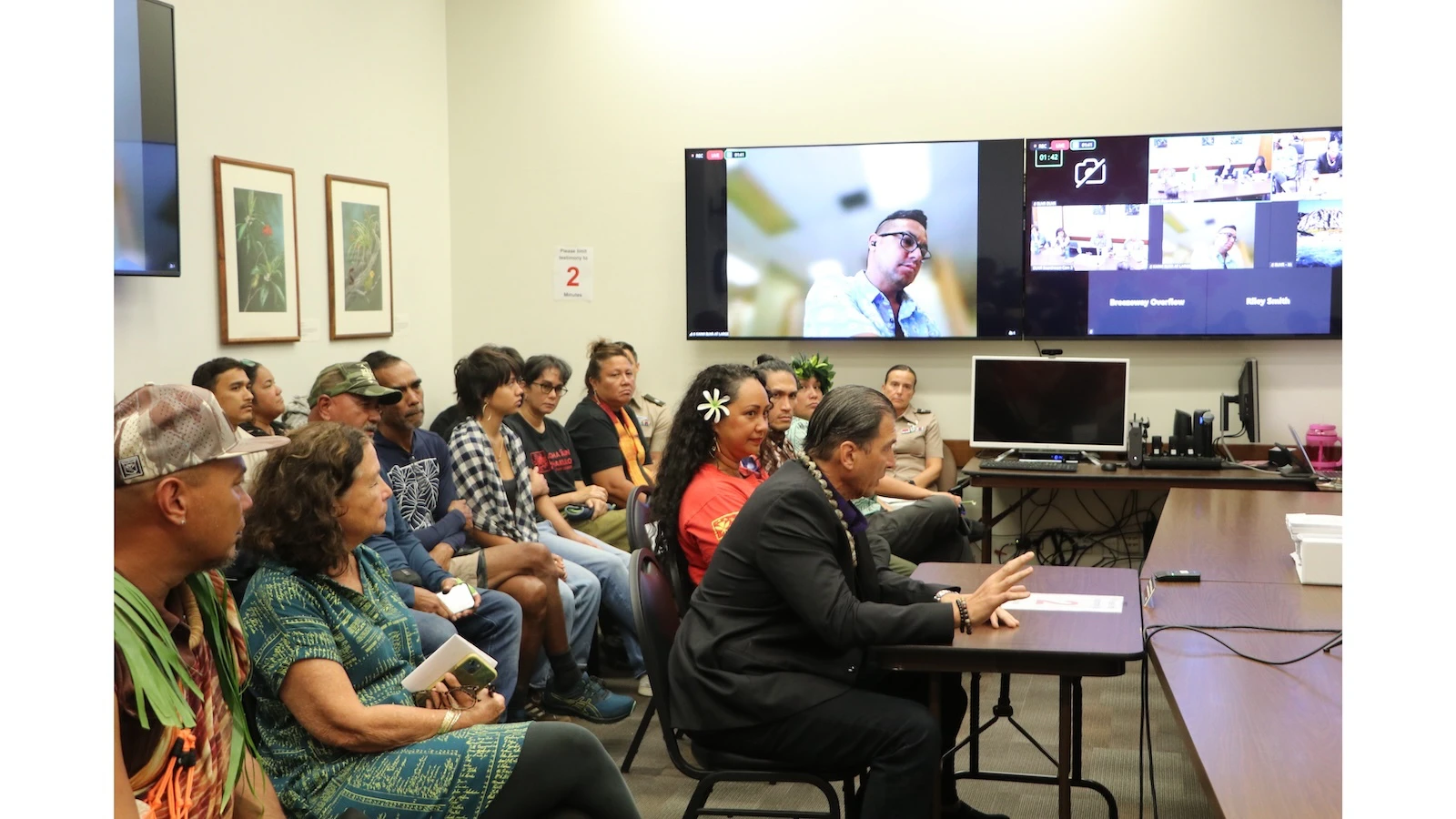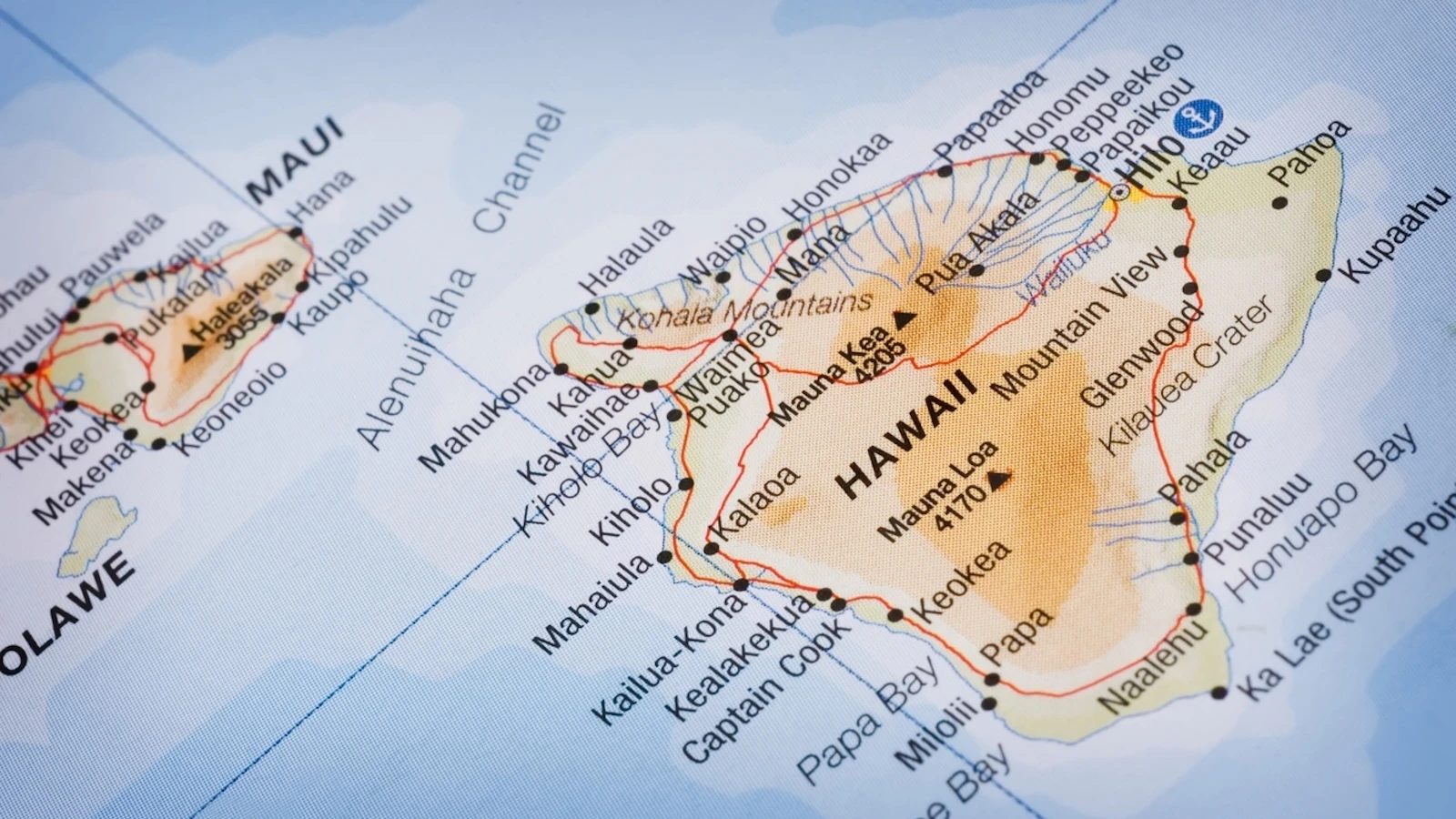The Board of Land and Natural Resources rejected a plan by the U.S. Army to retain land on Hawai‘i Island for training purposes after hours of impassioned opposition by residents.
The Pōhakuloa Training Area is a 132,000-acre military complex on the Big Island between Mauna Loa and Mauna Kea. The U.S. Army leases about 23,000 acres of the land from the state Department of Land and Natural Resources, with the majority of the remainder owned directly by the U.S. Government.
The DLNR lease was awarded in 1964 with a 65-year term, and is set to expire in August 2029. Consequently, the Army has been preparing over the last few years to apply to renew the lease and, most recently, published a final environmental impact statement for retaining the majority of the land — minus a little over 3,000 acres — for at least 25 more years in April.
That DLNR land is key to the entire facility, according to Army officials. Col. Rachel Sullivan, Commander of the U.S. Army Garrison Hawai‘i, told the Board of Land and Natural Resources on Friday that the DLNR land is vital connective tissue between the government-owned parcels, and is therefore essential for PTA’s continued functioning — and by extension, for the U.S. Armed Forces’ entire Pacific defense strategy.
“Hawai’i’s location at the crossroads of the Pacific makes it critical for national defense,” Sullivan told the BLNR Friday. “The Army’s presence in Hawai‘i is vital to our national security strategy to deter conflict and maintain a safe, stable and secure Indo-Pacific.”
Sullivan said PTA is the primary training area for Hawai‘i's land-based armed forces, and allows for wide-scale joint training exercises — such as live-fire training — otherwise unavailable in the state.
The BLNR convened Friday to decide whether to accept the EIS. But after Sullivan’s initial presentation, Big Island residents held court for hours, with more than 1,500 people appearing in person, via Zoom or through written testimony urging the board to reject the Army.
“Real security for Hawai‘i comes not from wargames, but from food sovereignty, disaster resilience and the protection and restoration of ‘aina,” said Tia Marie Masaniai-Estrera said.
Scores of testifiers argued that the Army’s EIS is deficient, and does not include vital data such as a full survey of cultural sites within the PTA area, complete greenhouse gas emissions data for the facility, and a cumulative impact analysis for the entire training area.
“The use of kanaka trust lands designated as conservation lands have now been turned into impact zones within the PTA complex,” said Ana Kahoopii, adding that she lives downwind of PTA. “This is not aligned with malama ‘aina or the contract agreement with the DLNR to restore these lands to their original conditions.”
Attendees decried the Army’s impact on the ecology of the area — testifier ‘Alihilani Katoa claimed at least three native birds have gone extinct as a result of military operations — and argued that decades of cumulative impacts have compromised groundwater sources, endangered species, and more.
Those concerns had already been raised by DLNR itself. In a report reviewing the EIS, staff noted that the document does not sufficiently evaluate the ecological impacts of activities in the federally owned portions of PTA and does not include a sufficient archaeological survey of the site.
Furthermore, DLNR’s report noted that military use of the Pohakuloa land is “neither consistent with the overall objective or allowable uses” of land zoned for conservation.
Other testifiers were mistrustful of any reporting by the Army about their activities. Rosanna ‘Anolani Alegado wrote that the Army has been historically inconsistent about the degree to which depleted uranium rounds were discharged at PTA over the years — the EIS states that only about 400 depleted uranium rounds were fired at PTA as a spotting round for the Davy Crockett tactical nuclear weapons platform, but Alegado claimed that other Army officials have estimated the number closer to 2,000.
Atop all these grievances, still other attendees highlighted the indignity of the Army’s agreement with the state: the Army pays $1 a year for its lease, although the EIS notes that any renewal of the lease would come with fair-market rates.
Little to no testimony came in support of the EIS as the meeting stretched on for more than nine hours.
Army representatives were given some opportunity to defend themselves. Alice Roberts, program manager for the Army training land retention effort, said the Army had conducted a thorough archaeological inventory of PTA, following the 2022 discovery of funerary objects on PTA land.
Roberts added that the Army plans to have a complete biological assessment of the area by the end of the year, although BLNR chair Dawn Chang noted that it “would have been helpful” to have such information available along with the EIS.
“The community feels that ongoing Army activities are destructive to the land and do not fit within a conservation district,” Roberts said. “This is something we’ve heard in our public meetings as well. We recognize these concerns, we recognize the trauma.”
But BLNR itself was scarcely less critical of the Army. Board member Kaiwi Yoon reiterated a litany of deficiencies in the EIS and said the Native Hawaiian community is feeling “desperate” after years of struggling against exploitation.
“You’re dealing with a very exhausted Hawaiian community and an even more exhausted Hawai‘i, the place,” Yoon said, later drawing comparisons to human rights struggles elsewhere around the world.
“The only thing different between Hawai‘i and Palestine is that it is indisputable that kanaka maoli are the native peoples here,” Yoon said.
Riley Smith, Hawai‘i Island BLNR member, said there is still World War II-era unexploded ordnance being cleaned up from other parts of the Big Island, and questioned how quickly the Army can be expected to clean PTA lands of military debris.
But although Smith ultimately moved to accept the final EIS, his fellows on the board disagreed.
“Is live-fire and war practice good or bad for our cultural and natural resources?” Yoon said. “The answer is clearly no!
”The board voted 5-2 to reject Smith’s proposal and Yoon introduced a countermotion to reject the EIS and recommend the Army to address the document’s deficiencies. The board voted 5-1 in favor of Yoon’s motion, with Smith voting against and member Vernon Char abstaining.
Chang said after the meeting that the decision was “one of the hardest [she’s] ever had to make."
"This decision was not about the merits of whether the Army should not conduct training in Hawai‘i, but whether the FEIS provided the public and the land board adequate information to make an informed decision about the environmental impacts of the proposed action," Chang said, reading from a prepared statement.
Chang said the Army’s future actions could include resubmitting an amended EIS, filing for an appeal, or even filing a lawsuit against the state, but declined to speculate on what the Army will choose.





